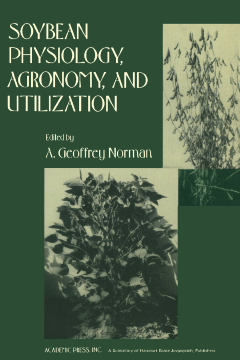
Additional Information
Book Details
Abstract
Soybean Physiology, Agronomy, and Utilization attempts to cover and treat in logical sequence the factors that contribute to the potential and versatility of soybeans. The soybean is a major crop plant in the United States. Based on the utilization of the bean, or products therefrom, a substantial soybean industry has also developed. Its uses, agricultural and industrial, primarily depend on the high content of both protein (ca. 40%) and oil (ca. 20%) in the bean.
The book begins by discussing soybean production in the United States and worldwide; the uses and economics of soybean products; and the soybean in physiological research. It explains the growth and development of soybeans. It discusses the physiological processes responsible for assimilating the plant body from the environment, namely photosynthesis, nitrogen fixation, and nitrate reduction. Subsequent chapters examine the impact of environmental variables—such as light, temperature, water, wind, and pests—on soybean plant characteristics as well as soybean breeding, production, processing, and utilization.
